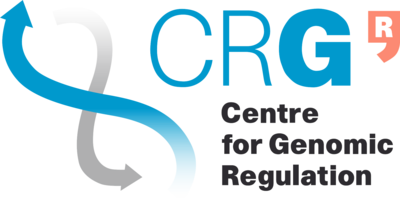Publication:20161121153150
From Bioinformatics Core Wiki
| Publication | |
|---|---|
| URL | http://www.ncbi.nlm.nih.gov/pubmed/26730850 |
| Title | Prp4 Kinase Grants the License to Splice: Control of Weak Splice Sites during Spliceosome Activation
|
| Authors | Daniela Eckert, Nicole Andrée, Aleh Razanau, Susanne Zock-Emmenthal, Martin Lützelberger, Susann Plath, Henning Schmidt, Angel Guerra-Moreno, Luca Cozzuto, José Ayté, Norbert F. Käufer |
| Date | 2016-01
|
| Publisher | PLoS genetics |
| DOI | 10.1371/journal.pgen.1005768 |
| Tag | Cell Cycle Proteins, Introns, Mutation, Protein Serine-Threonine Kinases, RNA Splice Sites, RNA Splicing, RNA Splicing Factors, Ribonucleoprotein, U4-U6 Small Nuclear, Ribonucleoproteins, Small Nuclear, Schizosaccharomyces, Schizosaccharomyces pombe Proteins, Spliceosomes, Transcription Factors |
Abstract:
The genome of the fission yeast Schizosaccharomyces pombe encodes 17 kinases that are essential for cell growth. These include the cell-cycle regulator Cdc2, as well as several kinases that coordinate cell growth, polarity, and morphogenesis during the cell cycle. In this study, we further characterized another of these essential kinases, Prp4, and showed that the splicing of many introns is dependent on Prp4 kinase activity. For detailed characterization, we chose the genes res1 and ppk8, each of which contains one intron of typical size and position. Splicing of the res1 intron was dependent on Prp4 kinase activity, whereas splicing of the ppk8 intron was not. Extensive mutational analyses of the 5' splice site of both genes revealed that proper transient interaction with the 5' end of snRNA U1 governs the dependence of splicing on Prp4 kinase activity. Proper transient interaction between the branch sequence and snRNA U2 was also important. Therefore, the Prp4 kinase is required for recognition and efficient splicing of introns displaying weak exon1/5' splice sites and weak branch sequences.
The genome of the fission yeast Schizosaccharomyces pombe encodes 17 kinases that are essential for cell growth. These include the cell-cycle regulator Cdc2, as well as several kinases that coordinate cell growth, polarity, and morphogenesis during the cell cycle. In this study, we further characterized another of these essential kinases, Prp4, and showed that the splicing of many introns is dependent on Prp4 kinase activity. For detailed characterization, we chose the genes res1 and ppk8, each of which contains one intron of typical size and position. Splicing of the res1 intron was dependent on Prp4 kinase activity, whereas splicing of the ppk8 intron was not. Extensive mutational analyses of the 5' splice site of both genes revealed that proper transient interaction with the 5' end of snRNA U1 governs the dependence of splicing on Prp4 kinase activity. Proper transient interaction between the branch sequence and snRNA U2 was also important. Therefore, the Prp4 kinase is required for recognition and efficient splicing of introns displaying weak exon1/5' splice sites and weak branch sequences.
